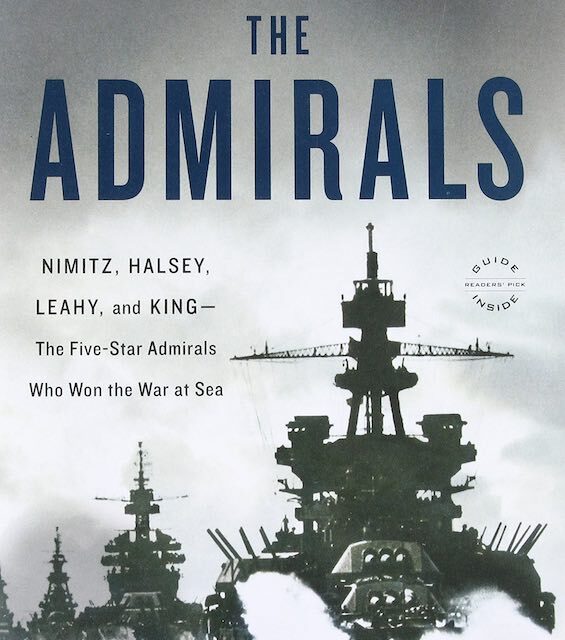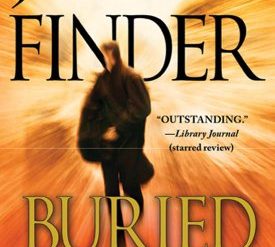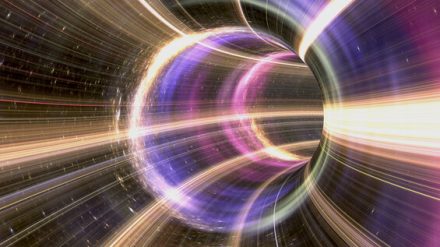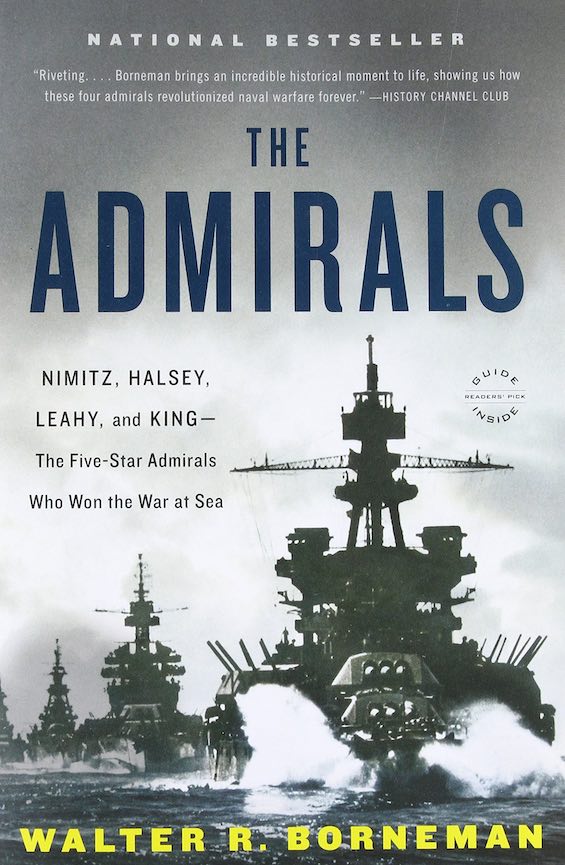
Most of the books about World War II that are widely read by Americans concern the war in Europe. My own reading reflects that imbalance. Still, I’ve managed to find, read, and review 11 that fit my definition of “good books” that cast light on the titanic, eight-year-long war unleashed by the Empire of Japan. I’ve given each of them a rating of ★★★★☆ or ★★★★★. I’m listing them here, arranged in alphabetical order by the authors’ surnames. Each title is followed by a link to my review.
This post was updated on February 28, 2024.
The Admirals: Nimitz, Halsey, Leahy, and King—The Five-Star Admirals Who Won the War at Sea by Walter R. Borneman (2012) 522 pages ★★★★☆ – The four men who led the US Navy in WWII
They were children of the Victorian Era. Annapolis graduates around the turn of the twentieth century. Junior officers in World War I, captains by 1927. They gained their first admiral’s stars by the 1930s, and all four were near or past retirement age when war broke out. Yet they rose to the pinnacle of leadership in that war and played outsized roles in the Allied victory. And one by one, as their talents became unmistakably clear, they each received a fifth star, becoming the only five-star admirals in American history. Walter Borneman engagingly tells their stories in his joint biography, The Admirals.
The four admirals
Chester Nimitz, Ernest King, Bill Leahy, and Bill Halsey each played a pivotal role in the Pacific war. Nimitz commanded the Pacific Fleet. King headed naval operations out of Washington, DC. Leahy served as FDR’s chief of staff. And Halsey commanded some of the Navy’s major operations in the war.
When Chester Nimitz took command in the Pacific as CINCPAC (Commander in Chief, Pacific) in January 1942, most of his fleet lay on the bottom of the ocean. Japanese forces were running rampant throughout the vast region, and a lesser man might have quailed at the challenge. Yet despite continuing Japanese advances, the United States Navy went on the offensive almost immediately, with morale-building “nuisance raids” at Kwajalein and Marcus Island (both in February 1942), Lt. Col. Jimmy Doolittle‘s PR-motivated bombing of Tokyo (April 18, 1942), and the Battle of the Coral Sea (May 4-8, 1942), where the Americans stopped the Japanese advance in the South Pacific.
Within six months of Pearl Harbor, Nimitz’s forces already began to turn the tide with a brilliant victory at the Battle of Midway (June 4-7, 1942). There, the admiral adroitly made use of intelligence findings that enabled the US Navy to ambush a top-secret Japanese advance on Midway. Read more.
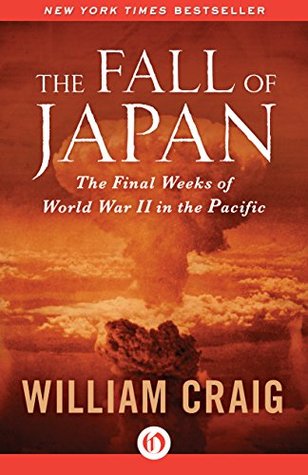
The Fall of Japan: The Final Weeks of World War II in the Pacific by William Craig (1967) 394 pages ★★★★★ – The ugly background to Japan’s unconditional surrender
Few people today wonder what led to Japan’s unconditional surrender in World War II. The United States dropped atomic bombs on the cities of Hiroshima and Nagasaki, and the Emperor caved. Job done. But of course the reality was far more complex. And the outcome was anything but certain.
Twenty-two years after the war ended, American historian William Craig revealed how that decision came about. He dug into hidden documents and spoke with dozens of those who played pivotal roles at the time both in Japan and the US. Day-by-day, and often hour by hour, Craig reconstructed the events that unfolded in Tokyo as the Empire of Japan pondered the Allies’ inflexible demands. He focused on the fateful days between August 9, 1945, when Fat Man detonated over Nagasaki, and August 15, when Emperor Hirohito radioed a message to Switzerland accepting the Allied terms of surrender. The story Craig tells in The Fall of Japan is at once compelling, disturbing, and illuminating. This book is a stellar example of how history can shine a bright light underneath the surface myths and reveal the messy human reality of the past. Read more.
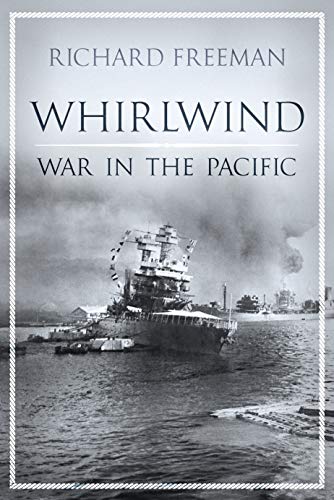
Whirlwind: War in the Pacific by Richard Freeman (2018) 238 pages ★★★★☆ – When the US won the War in the Pacific
Consider the Pacific Ocean. It’s the largest expanse of territory on the planet, spanning 63.8 million square miles. That’s seventeen times the territory of the United States, and ten times that of Russia, by far the largest nation on Earth. Should we wonder, then, why fleets of Japanese and American warships spent so much time hunting in vain to locate the enemy? That failure, and other misjudgments and blunders in the Pacific War, loom large in Richard Freeman’s illuminating account of the first six crucial months of 1942, Whirlwind: War in the Pacific.
Within just six months of the devastating attack on Pearl Harbor, the United States Navy reversed the strategic trajectory of the war in the Pacific. By mid-June, the Japanese Imperial Navy was on the defensive. In the Battle of the Coral Sea (May 4-8, 1942), the American fleet met the best the Empire could bring to the war and fought them to a standstill. And at Midway (June 4-7, 1942), US forces under Admirals Jack Fletcher and Raymond Spruance cut the heart out of the Japanese Navy, destroying four of the empire’s six heavy aircraft carriers. Afterwards, despite Japanese gains on the Asian continent, the die was cast for the United States to prevail. And it’s those three battles—Pearl Harbor, the Coral Sea, and Midway—that Richard Freeman analyzes in Whirlwind. Read more.
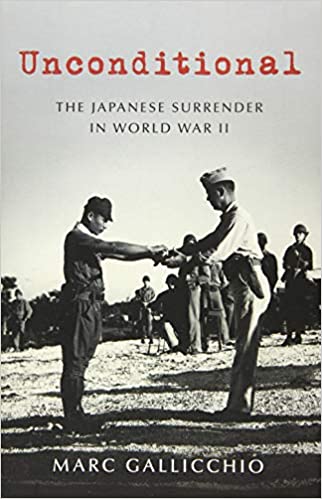
Unconditional: The Japanese Surrender in World War II by Marc Gallicchio (2020) 282 pages ★★★★☆ – The unconditional Japanese surrender in WWII
Three-quarters of a century after the end of World War II, FDR’s policy to demand unconditional surrender from Germany and Japan may seem simply logical. After all, in an era of total war, the only guarantee that either nation wouldn’t sufficiently recover to attack again was total Allied control over their system of government following the end of hostilities. That seemed assured in the case of Germany, which ended the war in rubble and ashes and divided between East and West. But unconditional surrender was a far more complex question with respect to Imperial Japan. For US President Harry Truman to pursue the policy to the end in 1945 involved a complex calculus weighing a host of mutually contradictory military, political, diplomatic, and economic factors. Villanova University historian Marc Gallicchio adroitly untangles them in Unconditional: The Japanese Surrender in World War II.
Wishful thinking on both sides
In the final months of the war in the Pacific, key players on both the Japanese and American sides indulged in what can only be called wishful thinking.
- Emperor Hirohito and the militarists in power in Tokyo were convinced that the US would back down from demanding unconditional surrender and negotiate on terms favorable to Japan—if they could kill enough American soldiers and sailors. They believed the US public was weary of war and would find the mounting casualties unacceptable. While that might well have been the case had the war dragged on into 1946 (as US Army planners assumed would happen following an invasion), public opinion surveys suggested it was not true in the summer of 1945.
- In Washington, powerful figures in the White House, the War and Navy Departments, and the Congress were certain that “moderates” in the Japanese cabinet would seek—and, some thought, were seeking—to surrender, if only the US would permit them to keep the Emperor in place. Read more.
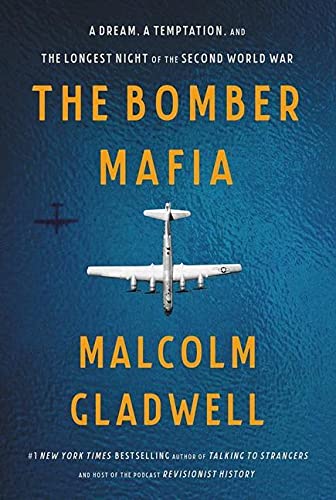
The Bomber Mafia: A Dream, a Temptation, and the Longest Night of the Second World War by Malcolm Gladwell (2021) 179 pages ★★★★☆ – Malcolm Gladwell wades into the debate about strategic bombing in WWII
In The Bomber Mafia, Malcolm Gladwell departs from the precincts of social psychology he knows so well (The Tipping Point, Talking to Strangers, Outliers) and ventures into the history of World War II. The book, subtitled A Dream, a Temptation, and the Longest Night of the Second World War, dramatizes the debate at the heart of the growing use of airpower in the war. There were two schools of thought about strategic bombing in WWII: high-altitude precision targeting and unrestrained area bombing of cities. Gladwell terms it “a case study in dreams gone awry.” In his telling, the debate was personified by the divergent careers of two US Army Air Force generals, Haywood Hansell and Curtis LeMay. LeMay emerged the winner at the time, and he comes across as the author’s hero.
Precision bombing was the dream of the dozen or so young maverick airmen dubbed the Bomber Mafia who trained US Air Force pilots in the 1930s. They staffed the Air Corps Tactical School near Montgomery Alabama at what was then called Maxwell Field. Their hopes rested on a brilliant innovation called the Norden bombsight. In tests, Carl Norden‘s invention seemed miraculous, encouraging the leadership of the Army and Navy to believe their planes could “drop a bomb into a pickle barrel from 30,000 feet.” Read more.
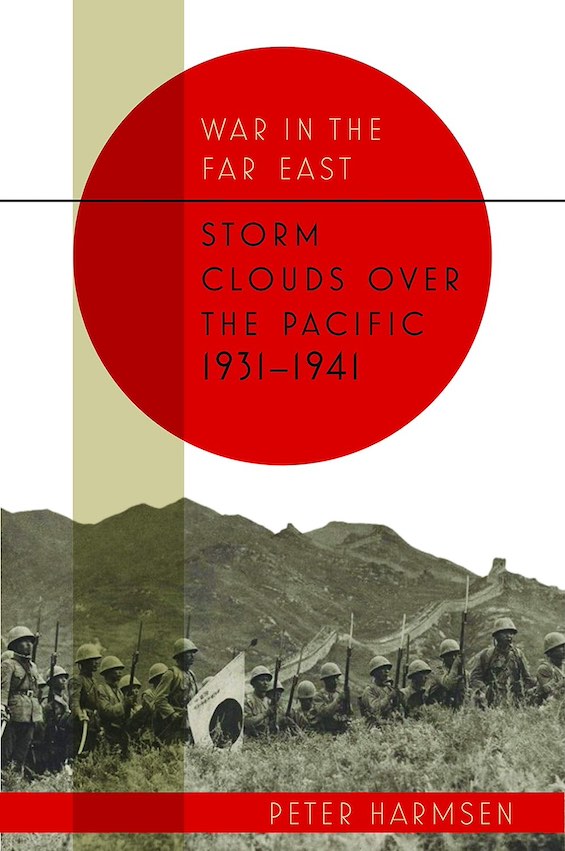
Storm Clouds Over the Pacific, 1931-1941 (War in the Far East #1 of 3) by Peter Harmsen (2018) 234 pages ★★★★☆—The first decade of World War II in the Pacific
Anyone with more than a cursory knowledge of World War II knows that the Soviet Union paid the greatest price for resisting the Nazis. Estimates of the country’s total dead range from 24 to 30 million. But fewer know that China’s losses in the war were also massive. They were somewhere between 15 and 20 million, far greater than those in any other country. But for the USSR the war lasted four years. For China, it lasted fourteen. Because beginning in 1931, the Empire of Japan seized China’s northernmost province, Manchuria, and held it until the war’s bitter end—while occupying nearly half the rest of the country. And, in Storm Clouds Over the Pacific, 1931-1941, the first in a series of three short books, author Peter Harmsen offers an account of the first decade of World War II in China in grim and sometimes painful detail. Read the review.
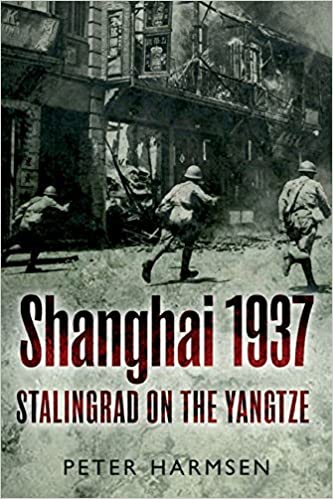
Shanghai 1937: Stalingrad on the Yangtze by Peter Harmsen (2013) 390 pages ★★★★☆ – The 1937 Battle of Shanghai that started World War II
To an outsider, a rapid Japanese victory in the 1937 Battle of Shanghai might have appeared inevitable. Emperor Hirohito and the militarists who commanded the Japanese Imperial government shared that opinion. After all, their country had been building its military into a world-class force for nearly seventy years since the Meiji Restoration of 1868. The Chinese were no match for the mechanized might of the Japanese Army on land and its superiority both in the air and on the water. Unsurprisingly, then, as Harmsen notes, “[i]n their habitual disdain for the Chinese, the Japanese leaders figured that this would be more than enough to deal with the nuisance across the sea.” They expected to take Shanghai within days. “Underestimating the foe was a mistake they were to repeat again and again in the coming weeks and months.”
Harmsen describes the deployment of troops on both sides, allowing the reader to follow the confusing course of the battle by consulting maps included in the book. We learn how Japanese overconfidence forced its generals to request reinforcements from Tokyo at several crucial points in the battle. At times, Harmsen relates the experiences of some of the many European and American expatriates who lived in the city and witnessed the fighting. He draws from contemporaneous journalistic accounts as well. Some passages that illustrate the plight of individual soldiers and the deprivations of the city’s civilian population are poignant and revealing. The 1937 Battle of Shanghai was a human drama of epic proportions. Read more.
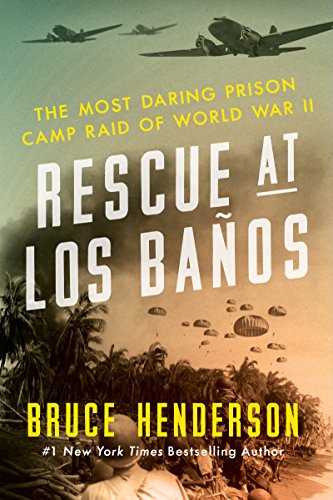
Rescue at Los Baños: The Most Daring Prison Camp Raid of World War II by Bruce Henderson (2015) 389 pages ★★★★☆ – A spectacular WWII prison camp rescue, one that really happened
Early in 1945, as the Nazi regime began to crumble and American soldiers, marines, and sailors relentlessly pushed ever closer toward the Japanese home islands, two thousand civilian prisoners of war, mostly Americans, suffered indescribable deprivation at the hands of a sadistic prison camp commander, deep in a Philippine jungle. Their story—and that of their liberators—is brilliantly told in Bruce Henderson‘s Rescue at Los Baños. It’s a tale of courage and resourcefulness that illuminates one of the most revealing chapters in the history of World War II.
A model for raids behind enemy lines
I have no idea whether the raid on Los Baños was indeed the most daring of World War II. But it was surely the most spectacular, involving near-simultaneous attacks by at least half a dozen different units coming at the camp from every conceivable angle. And it was spectacularly successful. Just three US combatants and two Philippine guerrillas died in the operation. The Japanese lost hundreds of soldiers to death or capture. There were “no civilian fatalities.”
Those Army intelligence planners couldn’t possibly have come up with a better subject for a book. It should not be surprising that, as the author discloses in the book’s appendix that lists the Dramatis Personae, “the Los Baños rescue mission became a legendary benchmark for military intelligence, planning, and execution of a raid behind enemy lines, and has been studied at military staff and command schools in the United States and elsewhere.” Read more.
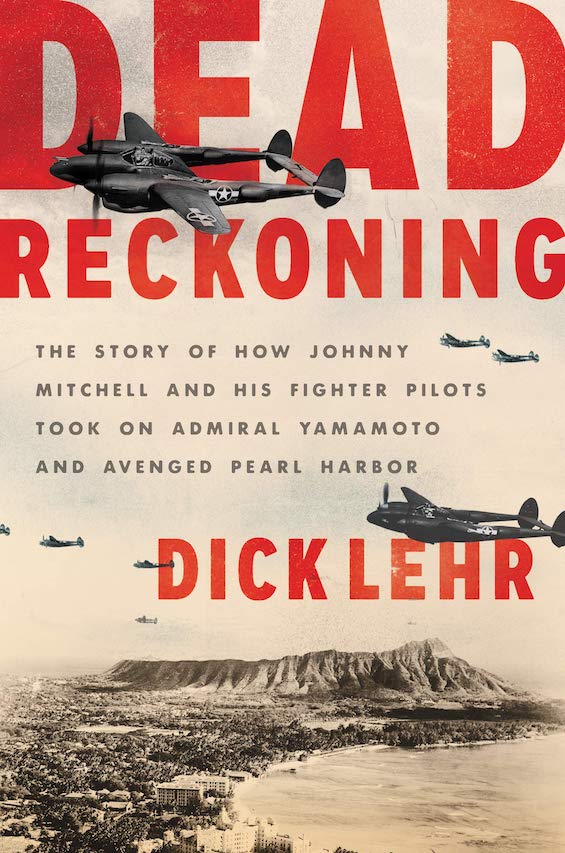
Dead Reckoning: The Story of How Johnny Mitchell and His Fighter Pilots Took on Admiral Yamamoto and Avenged Pearl Harbor by Dick Lehr (2020) 476 pages ★★★★★—The WWII mission to exact revenge for Pearl Harbor
This is the story of two men, one Japanese, the other American. They’re 30 years apart in age and might have come from different galaxies for all the different ways their experience has shaped them. One is Admiral Isoroku Yamamoto, commander in chief of the Japanese Empire’s Combined Fleet. He’s the man who planned the surprise attack on Pearl Harbor carried out on December 7, 1941. The other is Major John Mitchell of Enid, Mississippi. Known as Mitch, he commanded the US Army Air Forces fighter squadron that ended the admiral’s life on Palm Sunday, April 18, 1943, exerting revenge for Pearl Harbor. (The mission was called Operation Vengeance.) In Dead Reckoning, journalist Dick Lehr brings both men back to life in a compelling account of their lives up to the fatal moment when their timelines intersected.
The man who made Pearl Harbor happen
In every respect, Yamamoto was the architect of the sneak attack on what President Franklin Roosevelt called “a date which will live in infamy.” For decades, the brilliant Japanese naval officer had been the leading proponent of the development of attack aircraft and aircraft carriers against the powerful opposition of the “battleship admirals” who long controlled the Japanese Navy. In fact, Yamamoto had openly advocated the use of airplanes based on ships even before a single aircraft carrier was to be found anywhere on Earth. It was his lobbying of Mitsubishi Heavy Industries that led to the creation of Japan’s celebrated Zero fighter aircraft. And as the prospect of war with the United States steadily gained support in Japanese military circles in 1940 and ’41, Yamamoto advanced his audacious plan—again in the face of fierce opposition. Pearl Harbor was Yamamoto’s project, pure and simple.

Forgotten Ally: China’s World War II, 1937-1945 by Rana Mitter (2013) 480 pages ★★★★☆ – A gripping history of China in World War II
Read just about any popular history of World War II, and you’ll find innumerable references to the Allies as the Big Three of Britain, the US, and the Soviet Union. What’s missing is recognition that China bore nearly as high a price as the USSR, with an estimated fourteen to twenty million dead compared to fewer than half a million for the UK and the US. (The Soviet Union lost as many as twenty-four million dead.) On that basis alone, Oxford University historian Rana Mitter is justified in titling his revisionist history of China in World War II Forgotten Ally. But, as he explains at length, recognition of China’s contribution to the war effort is overdue on a far broader basis than that.
China’s World War II experience has generated dueling myths and torrents of propaganda. In China itself, Mao Zedong’s government long suppressed any favorable comment about the performance of Chiang Kai-shek‘s Nationalists, or indeed that of any of his or Mao’s competitors for power. (Mao didn’t attain the undisputed leadership of the Communist Part until the war was nearly over, and Chiang was never fully secure at the top of the Nationalists until he fled to Taiwan in 1949.) So-called warlords always controlled large swaths of territory.) In Forgotten Ally, Mitter attempts to set the record straight. To a considerable extent, he succeeds. Read more.
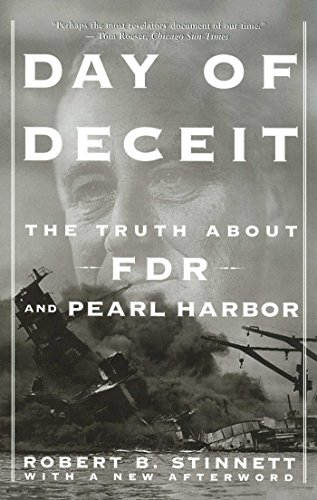
Day of Deceit: The Truth About FDR and Pearl Harbor by Robert B. Stinnett (1999) 416 pages ★★★☆☆ – Uncovering the truth about Pearl Harbor
When you challenge the historical consensus fundamental to our understanding of the past, you’d better be prepared for trouble. And that’s exactly what Robert Stinnett got when he published Day of Deceit, purporting to tell the truth about Pearl Harbor. Picking up on a charge long ago rejected by most historians, he claimed that President Franklin D. Roosevelt knew the Japanese were about to attack Pearl Harbor and deliberately withheld the information from the admiral in charge there. When Stinnett’s book was published in 1999, the New York Times review was typical: “Despite a dogged and sometimes compelling effort . . . Stinnett has produced no ‘smoking guns'” to substantiate his arguments. Established historians piled on, questioning the reliability of some of his sources and rejecting the evidence he produced to support his conclusions.
When did the US Navy break the Japanese naval codes?
The most explosive arguments in Stinnett’s exposé largely rest on a single crucial assertion: that months before Pearl Harbor, US Navy codebreakers had unraveled the Japanese naval codes and were already intercepting and decoding the Empire’s naval traffic at a furious pace. Most historians (and the US Navy) insist that the Japanese observed radio silence on the way to Hawaii and that, in any case, the decoding breakthrough didn’t come until after the Japanese attack—and just in time to enable the Navy to achieve a great victory at the Battle of Midway in June 1942.
How, then, could Stinnett produce a veritable flood of dated and decoded intercepts that clearly document the progression of the Japanese fleet toward Hawaii in late November and early December 1941? And were the Navy men who showed the evidence to the author—and the documents themselves—all lying? Were these his “unreliable sources?” After all, most were enlisted men, contradicting the testimony of US Navy officers. Should we believe that only enlisted men lie and officers never do? Read more.
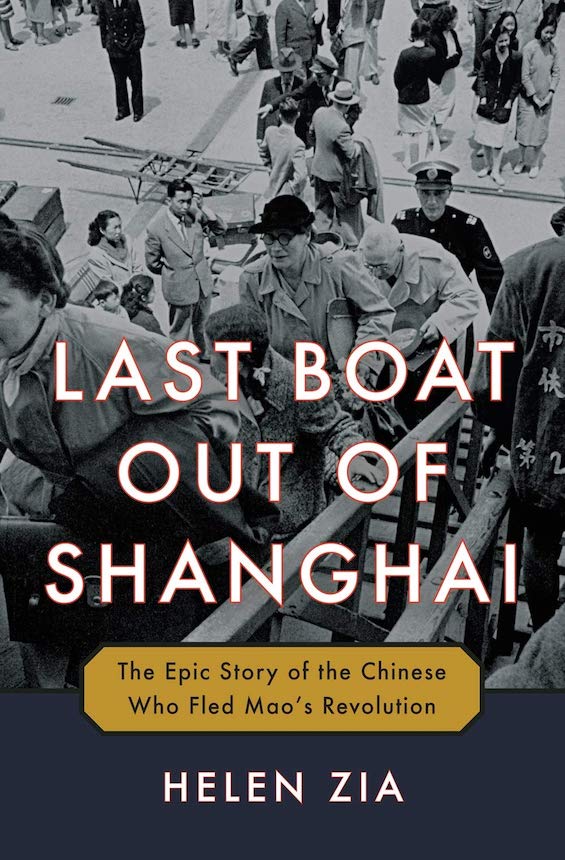
Last Boat Out of Shanghai: The Epic Story of the Chinese Who Fled Mao’s Revolution by Helen Zia (2019) 493 pages ★★★★★ – A gripping account of four young Chinese in revolution and WWII
When future historians look back at the most consequential events of the century just past, it seems likely they’ll place four or five episodes at the top of their lists. The Russian and Chinese Revolutions, of course. The thirty-year war that encompassed the two conflicts we now call the First and Second World Wars. And decolonization, beginning with the independence of India. But at the very top of that list is almost certain to be the decades-long upheaval that culminated on October 1, 1949, with the founding of the People’s Republic of China. And Helen Zia has done an extraordinary job of portraying the decade that preceded it through the lives of four remarkable young people who fled Shanghai in Last Boat Out of Shanghai.
Zia uses the tools of biography to paint a wide-screen view of China’s troubled history from 1937, when Japan launched World War II by invading the country, to 1949 and beyond. Her principal subjects are two women and two men among the estimated one million Chinese who fled Shanghai as the Red Army neared the city. Read more.
Novels about WWII in the Pacific
In addition to the nine nonfiction books listed above, I’m including here two solidly-researched novels that add insight to our understanding of the war in the Pacific. They’re both “alternate histories” that ask, and answer, two of the what-if questions most asked about the conflict.
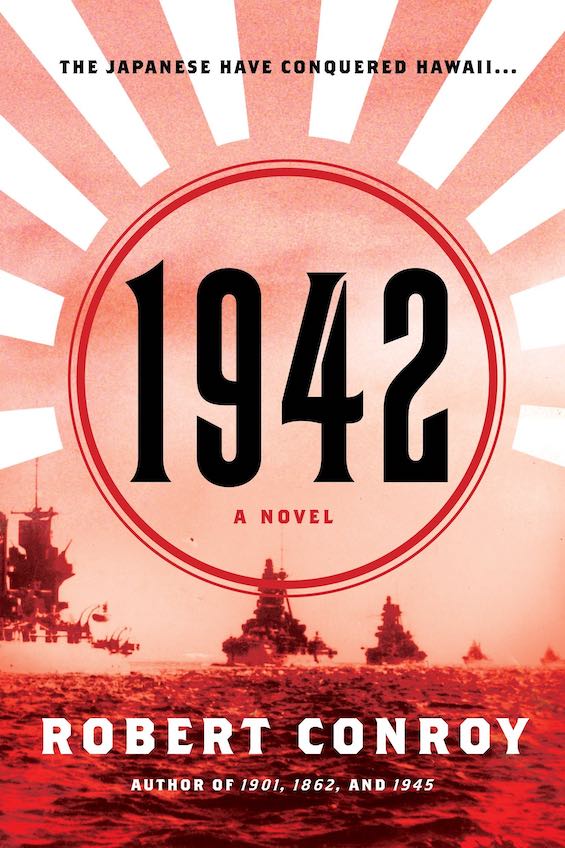
1942 by Robert Conroy (2009) 369 pages ★★★★☆ – What if Japan had finished the job in its attack at Pearl Harbor?
The hinge of history turns on chance, and alternate history grabs that insight and shakes it in our faces. When we ask the “what if” questions that arise as we ponder the past, historians shrug. The gist of their responses tends to be “it is what it is.” But a small number of authors who indulge in writing alternate history refuse to settle for that answer. They know, as do we all, that major historical events are complex beyond our comprehension. Like the butterfly flapping its wings in Brazil and causing rain to fall in Chicago, the action or inaction of a single person at a pivotal moment might shift the course of history. And no event in the story of the human race is richer with those possibilities than World War II.
Within the field of alternate history two men have proven to be the most prolific recent practitioners. Harry Turtledove (1949-), who holds a PhD in Byzantine history, is the best known of the lot. Alternate history abounds among the scores of historical fiction, science fiction, and fantasy novels he has written. Unfortunately, I’ve found his writing so crammed with clichés that it’s unreadable.
The sixteen alternate history novels by the late Robert Conroy (1938-2014) won’t win any literary awards, either. The writing style is pallid, even deadly dull at times. But his seven alternate histories of World War II display a deep knowledge of the men and machinery who drove the war and a masterful command of plotting. And he brings that skill to bear with great effectiveness in 1942, in which he speculates about what might have happened had Japan finished the job in its attack at Pearl Harbor. Read more.
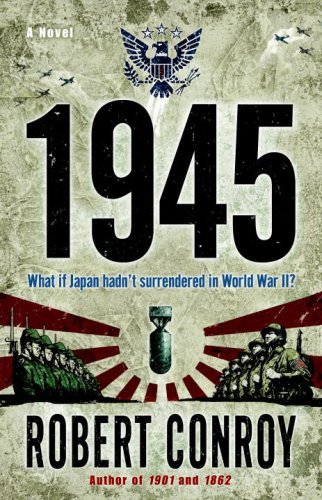
1945 by Robert Conroy (2007) 450 pages ★★★★★ – An alternate WWII history: What if Japan hadn’t surrendered?
One of the most hotly debated topics in recent American history was Harry Truman’s decision to drop atomic bombs on Hiroshima and Nagasaki. Although many within his administration resisted the action, Truman defended it on the grounds that the bomb would force Japan’s surrender. The likelihood, his military advisers asserted, is that he would save as many as a million US lives that would be lost in an otherwise necessary invasion of the Japanese home islands. Moral qualms aside, Truman proved to have been right. But what if he hadn’t? What if a military coup inside the Japanese leadership had pushed aside Emperor Hirohito and led the country’s already shattered army and navy in a doomed effort to continue the war? What if Japan hadn’t surrendered? That’s the premise of the late Robert Conroy‘s superb alternate WWII history, 1945.
Nothing goes as planned
In outline, Conroy’s story is straightforward. Military fanatics kidnap Hirohito and bundle him off to a secret location on the southern island of Kyushu. Meanwhile, the American people, having been promised that Japan would surrender, begin going sour on the war as the draft continues and soldiers are moved from Europe to the Pacific.
At the White House, the untested new President finds his advisers divided about manufacturing and dropping more atomic bombs but consents to releasing one on the small city of Kokura. (In fact, the town had been the primary target for the bomb dropped on Nagasaki. There were nearly no sizable targets left after four years of intensive strategic bombing.) And the American military gears up for a two-phase invasion of Japan: first, in November 1945, on the southern island of Kyushu, and then months later on the larger island of Honshu, moving across the Kanto Plain toward Tokyo. The Japanese military government sets out to mobilize resistance that, they hope, will cause the Americans so much pain that they will negotiate something less than unconditional surrender. Read more.
For related reading
You might also enjoy:
- The 10 most significant events of World War II
- 7 common misconceptions about World War II
- 20 insightful books about China
- 20 top nonfiction books about history
And you can always find my most popular reviews, and the most recent ones, on the Home Page.

